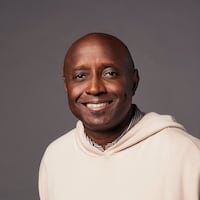In March I noted that experts who closely follow baseball's minor leagues cautioned that the Braves needed to restock their farm because most of the talent is at or near the big leagues. That was just before MLB reduced the draft from 40 rounds to five and put a $20,000 cap on bonuses for undrafted players. And the Braves had forfeited a second-round pick for signing reliever Will Smith, leaving them with four.
The Braves used all those picks on college players, including three pitchers, on Wednesday and Thursday. Beginning Sunday, the Braves will start trying to sign some players who didn't get drafted to join their organization for no more than $20,000. In a normal year, players drafted in the late rounds can expect six-figure signing bonuses with college scholarship offers as leverage.
Many of those players will have fewer choices in the year of the pandemic. There is a much larger group of college juniors who didn’t get drafted and will return to school. There are fewer high school prospects skipping college for cash. That’s likely to create a player pool that’s much bigger than scholarships available.
Braves scouting director Dana Brown will be among MLB executives trying to get the best players from that pool to go pro.
“We feel like there are some college guys that understand we are in a pandemic and they realize they want to play, and they realize they weren’t top picks in the first five rounds,” Brown said. “We’ve got a group of guys - I think probably somewhere in the 30’s - that we feel really good about that we are going to attack aggressively and try to get them signed.
“There is some talent out there. Particularly there is some really good arm strength guys. So, we will be aggressive on Sunday morning when they open up the gates for us.”
That sounds like the Braves will try to fulfill their long-time organizational mandate of loading up on as many pitching prospects as possible. After a one-year hiatus, they continued their tradition of using early draft picks on pitchers.
The Braves selected Wake Forest left-hander Jared Shuster with their top pick, No. 25 overall. After taking Michigan outfielder Jesse Franklin in the third round, the Braves picked Clemson right-hander Spencer Strider in the fourth round and Texas right-hander Bryce Elder in the fifth.
Credit: Nati Harnik
Credit: Nati Harnik
The Braves selected a pitcher with their top pick in five of the past six drafts. They also took pitchers with two of their four additional first-round picks during that span. The exceptions: one first-round pick for third baseman Austin Riley in 2015 and two first-round picks for catcher Shea Langeliers and shortstop Braden Shewmake in 2019, Brown’s first draft as scouting director.
Taking three college pitchers was a change for the Braves, who have favored high school pitchers in recent years. Five of six pitchers they drafted in the first round from 2015-2019 were prep players. Those younger prospects usually have more potential for growth with more risk of failure. College pitchers drafted in the the top two rounds are much better bets to make it to the the majors and stay there.
Brown said the Braves didn’t go into the draft with a focus on college pitchers. It turned out that way once Elder slid down in the draft because teams figured he’d be a “tough signing” that high. The Braves expect to pay Elder a bigger bonus than his slotted value. They project to save money by signing Shuster for lower than his slot value.
Does Brown believe the four-player draft class can quickly move up through the minor leagues together?
“I do,” he said. “These guys are pretty much mastering their craft. They are here for their ability. ... Not only do they have talent, they’ve been able to develop the skill which we think is going to lead to something so they could move along pretty quickly.”
It’s difficult to predict how baseball prospects will turn out. It’s nearly as hard to project future needs for the big-league Braves. But you can see a rough outline of how the newest draft picks fit in the organizational picture.
Franklin may not be needed anytime soon in the big leagues. The Braves are set for years to come at one position with MVP candidate Ronald Acuna, who is under contractual control through 2028. Center fielder Ender Inciarte is signed through 2022 and the Braves' two highest-ranked prospects are outfielders Cristian Pache and Drew Waters. They are projected to play in the big leagues soon.
The Braves could use a fast rise from their three newest pitchers. Two pitchers that Baseball America rank among their best prospects, Kyle Wright and Bryse Wilson, have been knocked around early in their big-league careers. Top pitching prospect Ian Anderson is near the big leagues, but experts don’t see much pitching depth at the lower levels.
The Braves already hit on one of their recent draft picks. Right-hander Mike Soroka was an All-Star in 2019, his first full big-league season. There are signs that Anderson could be the next good Braves pitcher to come from the minors. The Braves can fill other roster holes if Pache, Waters and Anderson are as good as advertised and if Riley can cut down on his strikeouts.
The Braves have good, young players on their roster. They have a handful of prospects who are poised to follow them. Those good developments at the big-league level have left their farm system a bit dry at the lower levels. The Braves started replenishing it in the draft but, in this strange season, there’s a lot more work to do in the days after it.
About the Author
The Latest
Featured


